Until today, Personally Identifiable information (PII) has acted as the key for personalization. It can track customer journeys, identify specific target segments and generate rich insights to create personalised omnichannel experiences, thus enhancing the engagement and ultimately the conversion rate for brands. However the latest technological advancements and GDPR regulations are pushing companies to think of new and innovative ways to offer personalization to its customers.
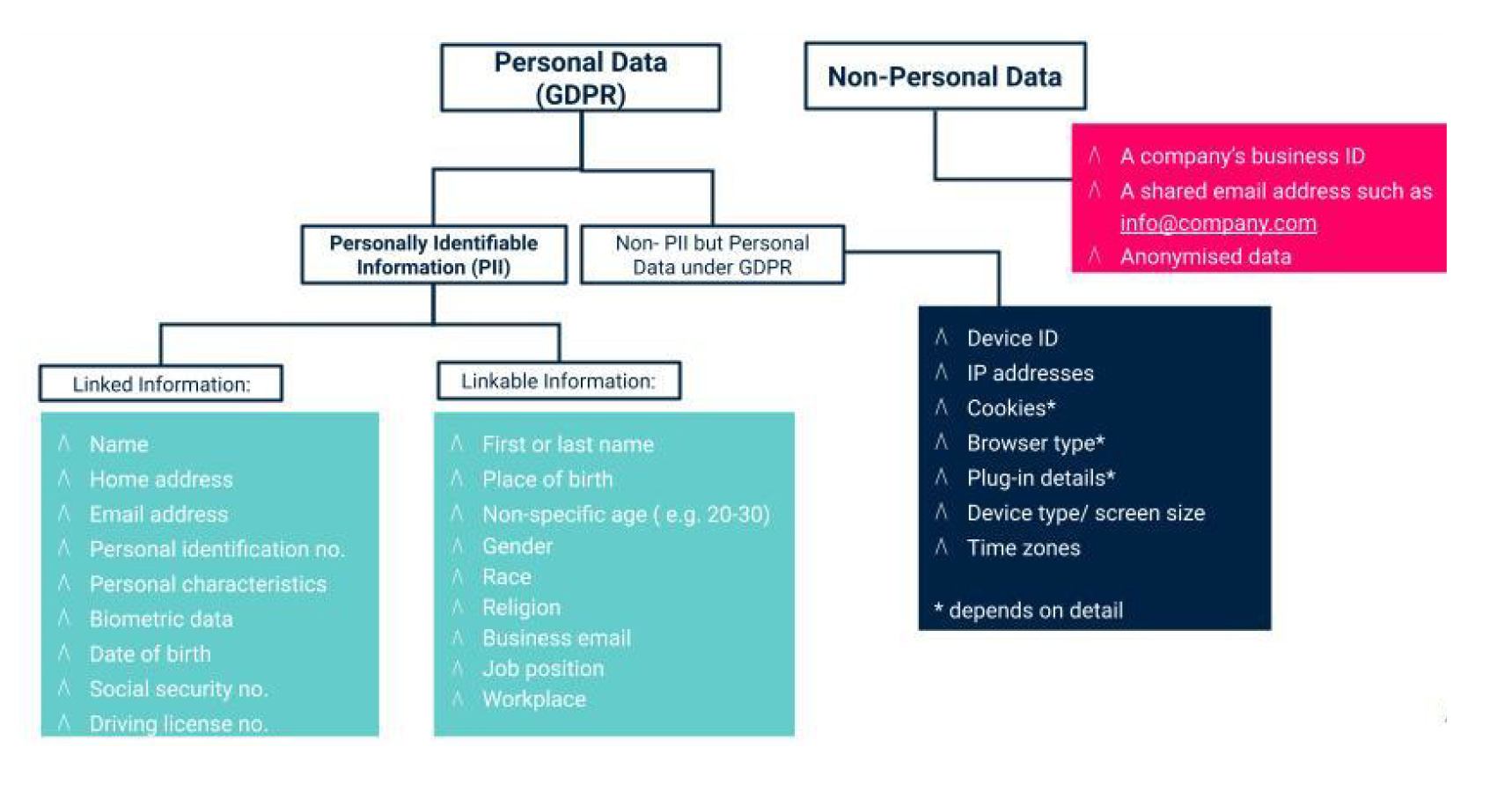
Enacted in May 2018, the GDPR aims to protect EU citizens’ personal data, and is already having major effects on companies in Europe.
What are the challenges ?
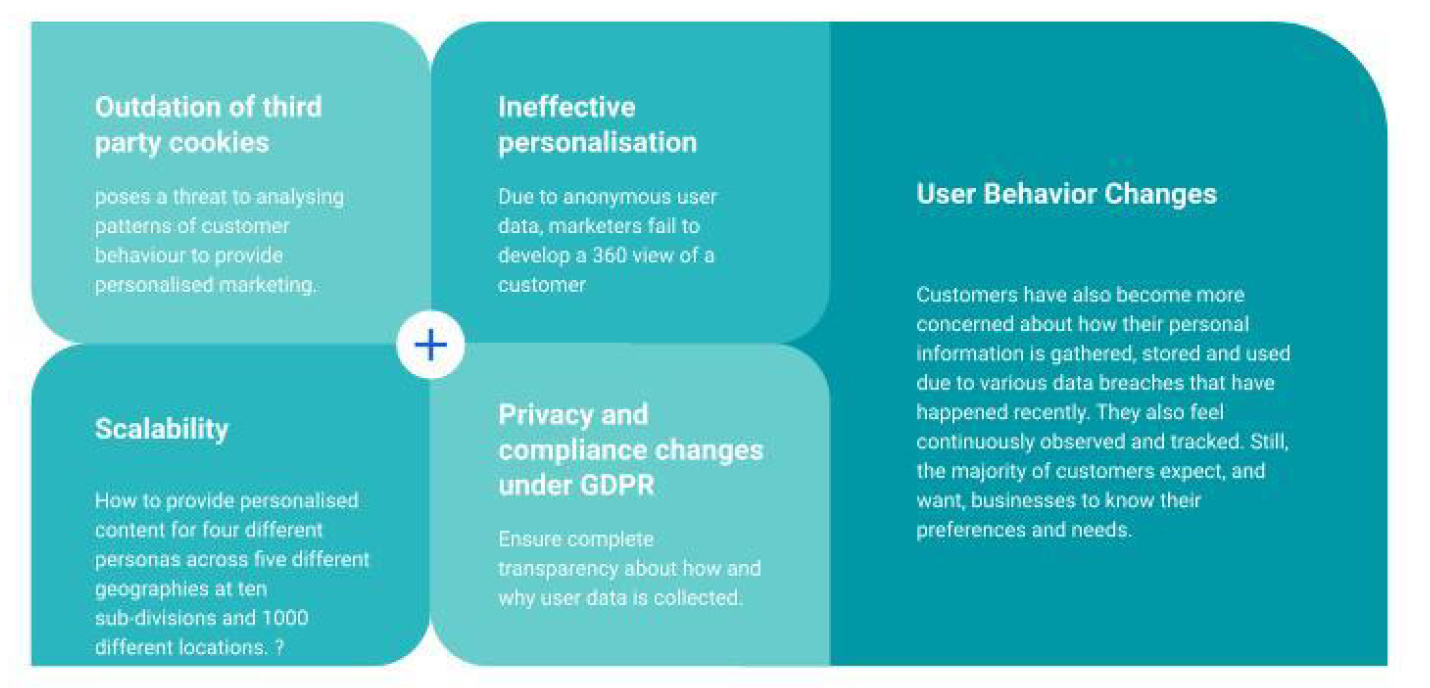
According to the Forbes Insight Study 2020x, 71% of consumers feel frustrated when a shopping experience is impersonal, 74% of customers feel frustrated when website content is not personalised and 70% of millennials are frustrated with brands sending irrelevant emails. Furthermore, 80% of consumers are more likely to make a purchase from a brand that provides personalised experiences, while 63% of consumers will stop purchasing from brands that show poor personalization tactics.
Hence, organisations need to find the right balance by showing their customers with personalised offerings, while keeping their data secure.
How is all of this impacting the advertising ecosystem & consumers?
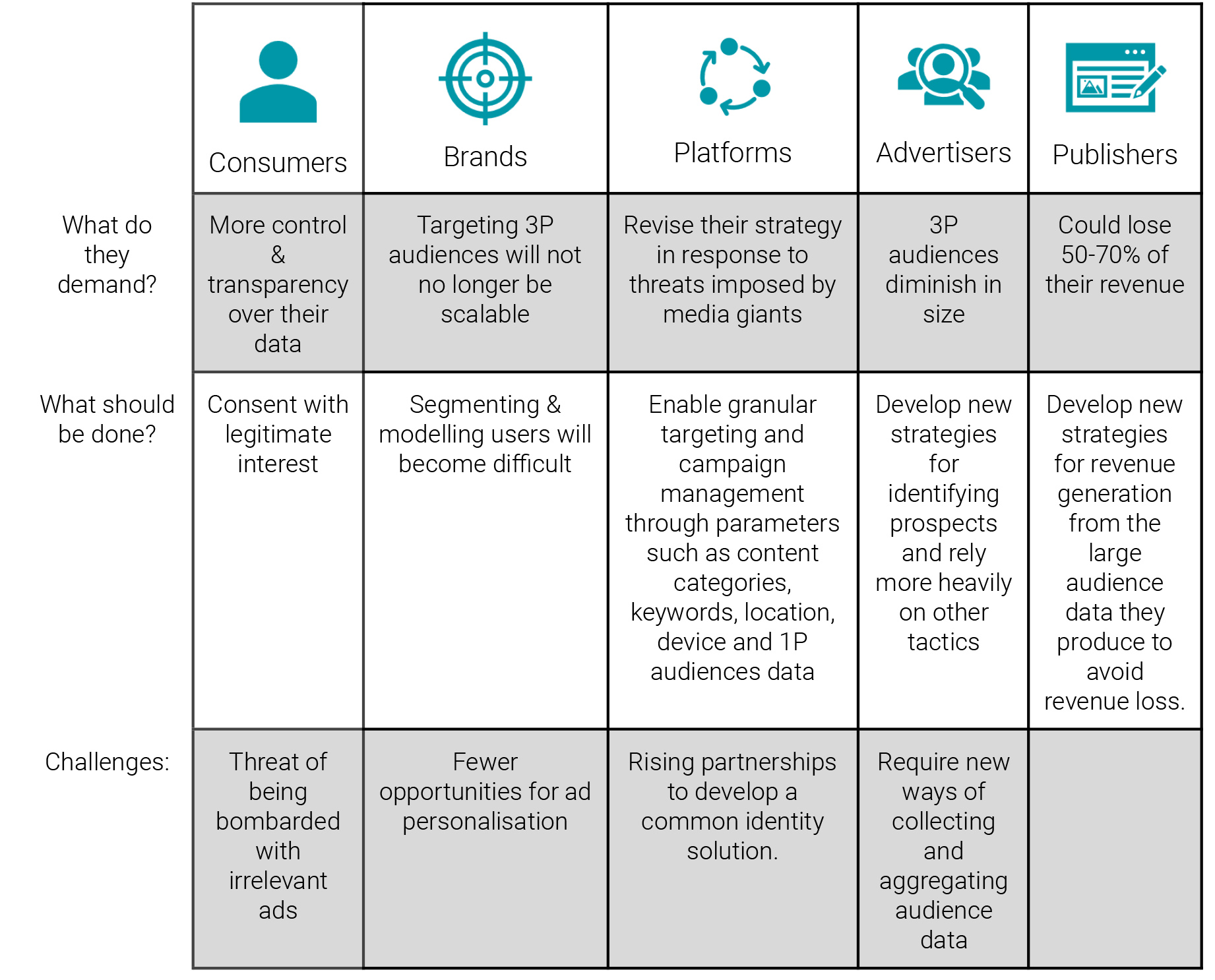
Amidst all the changes, how to provide personalization?
1. Zero-Party Data
Any helpful personal information that the customer is willing to share with you, can be Zero-Party Data (ZPD). The catch lies in how the engagement with a customer takes place. Do you remember when you set up your music interest after you downloaded a music app or talked to a bank representative to seek advice on the best investment for you? With the help of ZPD, there wouldn’t be much room left for the assumptions or the probabilistic guesses made on behavioural data. It is highly relevant, accurate and reliable. It also reduces marketing waste for a brand and simultaneously improves the lives of its customers, therefore becoming a win-win situation for everyone involved.
ZPD can be collected via surveys and questionnaires, which are backed up with a preference center where customers can update their profiles themselves. Competitions, social media stories and in-app preferences are some other interactive methods.
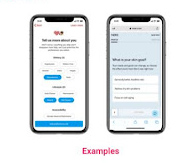
Examples: What are their preferred engagement channels?When is a suitable time that they like to be messaged and how often do they want to hear from the brands?
2. Email Marketing
According to Blog Hubspot Study 2021, email marketing generates $42 for every $1 spent, which is an astounding 4,200% ROI. This makes it one of the most effective options available and segmented email campaigns show 50% higher CTR than non targeted campaigns. Moreover, as per CampaignMonitor 2021 and 2019 studies, marketers who use segmented campaigns note as much as a 760% increase in revenue.
Benefits of personalization in email marketing according to marketers (Source : Salecycle 2020)
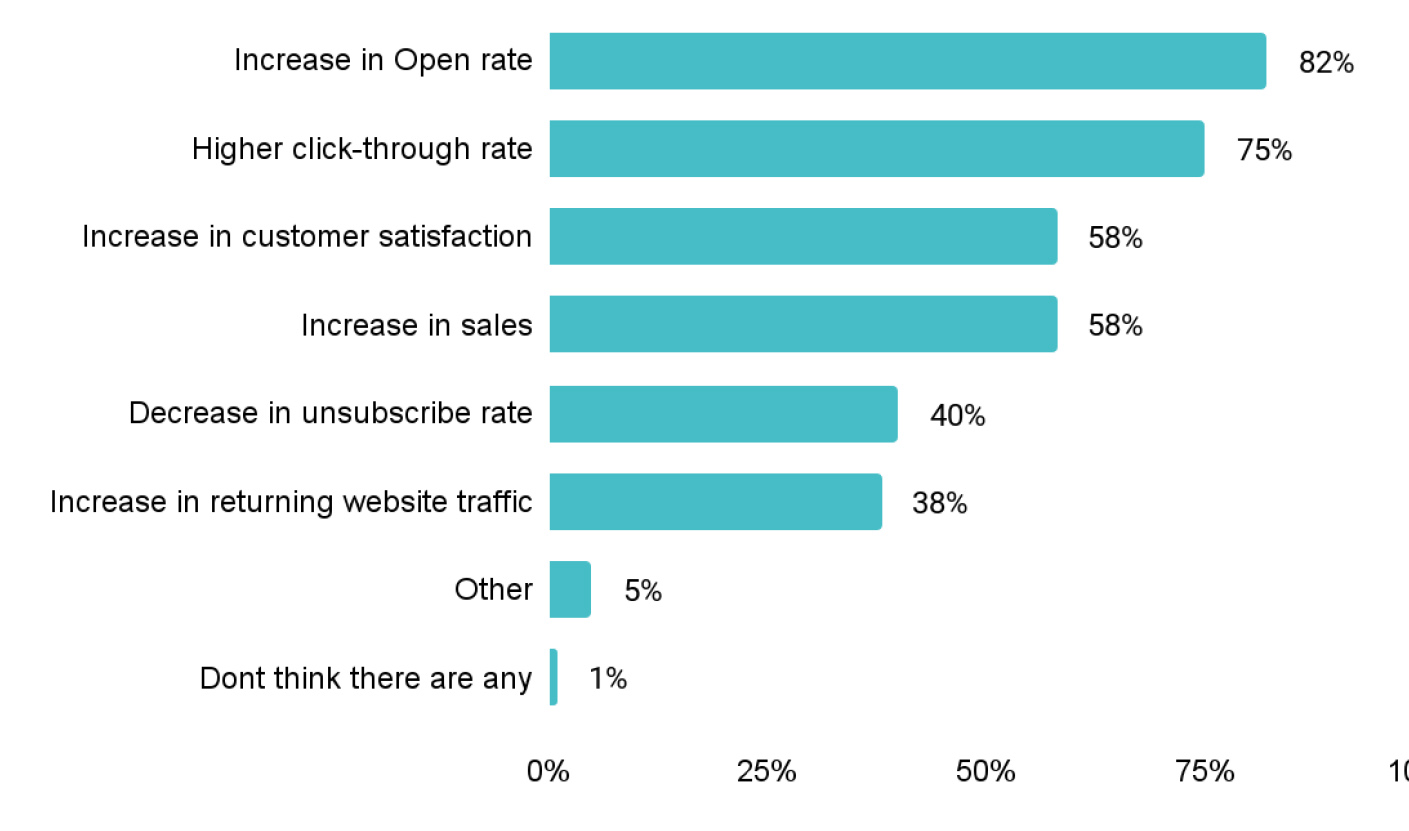
Artefact follows a four-step process to achieve the best results for the businesses. For holistic customer communication, the CRM system becomes part of a holistic system landscape in order to make optimal use of all customer data signals. At Artefact, we help our clients with all steps, from defining CRM strategy to implementing the tech infrastructure to enable them to run advanced AI based data driven CRM.
Selecting the right CRM tool that makes the best sense for your company, target customers, industry, as well as geography, is indeed one of the most crucial steps. Artefact performs a detailed analysis of all the relevant tools by comparing both functional and non-functional parameters. Once the tool is selected, the next step is to set-up the right trigger emails to keep the customers engaged at the right time with the right offer. These data signals are then analysed further for developing AI-powered advanced solutions to understand user behaviour.
AI-based clustering can analyse customer data from multiple touchpoints to get a complete picture, create more targeted segments and automatically adjust campaigns to be more personalised for each segment. It can even potentially develop a segment of one by treating each customer profile as a singular segment, enabling one-to-one communication with personalised content and timing tailored to their preferences.
Check out Scoring Customer Propensity using Machine Learning Models on Google Analytics Data.
Finally, to achieve holistic communication with customers, it is strongly recommended to constantly run experiments such as A/B tests, feed the results back as an input for optimisation and use CDP platforms to scale the AI-powered solution.
3. Website/App Personalization
Optimising the website and the mobile application to provide seamless customer experience using first party data and further encouraging visitors to provide their data is another way to thrive in the cookieless world. This can be utilised in improving page and content performance and segmenting customers to deliver improved personalisation. Again, to nail the web-personalisation, our proven test and learn four-step approach comes in handy. The first step is to define the scope and create strategies to select your audience. Define buyer personas using your own first-party data and via “people-based marketing,” i.e user login-based identity. This can be easily leveraged to track consumers across sites they login to as consumers themselves directly grant consent to use their Personally Identifiable Information (PII). For instance, use session-aware recommenders or on-site behaviour triggers are examples. Check out Out of cookies? Fuel an AI-based Audience Engine with first-party data for accurate targeting!.
At Artefact, use case scenarios were designed for Samsung to address visitors with a personalised trade-in banner for a new mobile phone, depending on the device that the user is currently browsing. Moreover, we have developed a scoring algorithm that predicts the probability to convert for each prospect visiting the website. Each prospect had a personalised message according to their score, leading to a +10% conversion increase.

The second step is to configure the right personalization tool for your website by comparing the functionality and carrying out the fit analysis. Next is to deploy the A/B testing operations by assessing personalised headlines, content and CTAs, and product recommendations for the selected audience variants found in the first step. Finally, to keep improving personalisation, performance should be measured continuously and iterations should be done accordingly.
4. 2P Partnerships
Apart from maximising your own first-party data collection, second-party data partnerships with tech leaders and publishers are also a viable option to gather user-rich information. Such organisations collect their own first-party data and collaborating with them can make this valuable data easily available to the brands. New audiences can be explored and better personalization can be offered to the overlapping ones. Brands can securely exchange audience information and insights through a neutral identity partner. According to the Forrester reports, 96% of companies that have implemented data partnerships have observed an increase in value creation. Check out Are you sitting on a (second-party) data goldmine?
5. Walled Garden Social Login
This is an easy, convenient, and seamless option to gather Personally Identifiable Information data and offer personalization. According to Customer Identity Trend Report 2022, 73% of the young generation (18-25 year olds) prefer social login over the long registration process and over 70% prefer Facebook and Google as their preferred way of social login. Social login is a quicker alternative and it can be beneficial in multiple ways, not just for enhancing the conversion rate, but also in providing scale, reducing the abandoned cart and fetching more precise data of customers that can be further used in the marketing funnel optimization.
It is a straightforward process and can be completed in just three steps:

6. S2S Integration
Server-to-Server API can be used to directly integrate with the core personalization tracking API and provide real-time personalization. Recently S2S API has been extensively developed by Facebook and now appears under the new name “Facebook Conversions API” (FB-CAPI).The FB-CAPI transmits events (actions that users carry out on the website) directly to Facebook without requiring a third-party cookie. Although there has been debate in the market over the data usage and compliance, if implemented correctly and in alignment with the legal departments, this is the future to integrate third party advertising tools with your websites to deliver data-driven personalization to your customers.
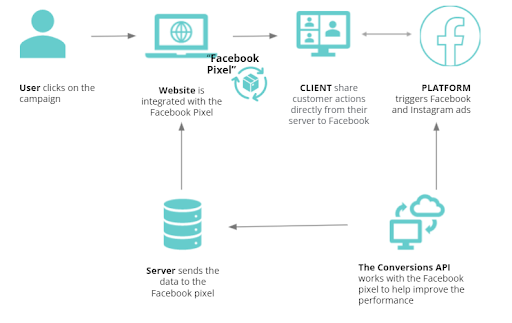
Conclusion
Personalization is not going to reduce or die but the current tech and regulatory changes definitely are pushing companies to think of new and innovative ways to reach out to their customers with the right content at the right time, and with the right message. As a company, you have to devise your personalization strategy for the next few years. Our recommendation is to start with multiple quick wins with a test and learn approach across a few markets. Then, see which of the personalization techniques and technology brings more ROI and delivers high user engagement/value. Adopt and scale those quick wins to keep developing your personalised offering.

 BLOG
BLOG





